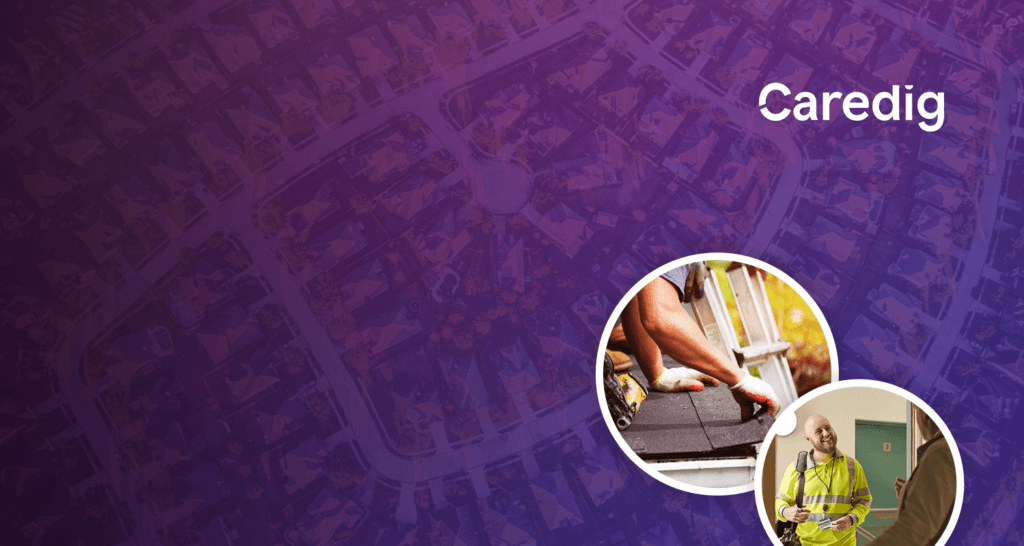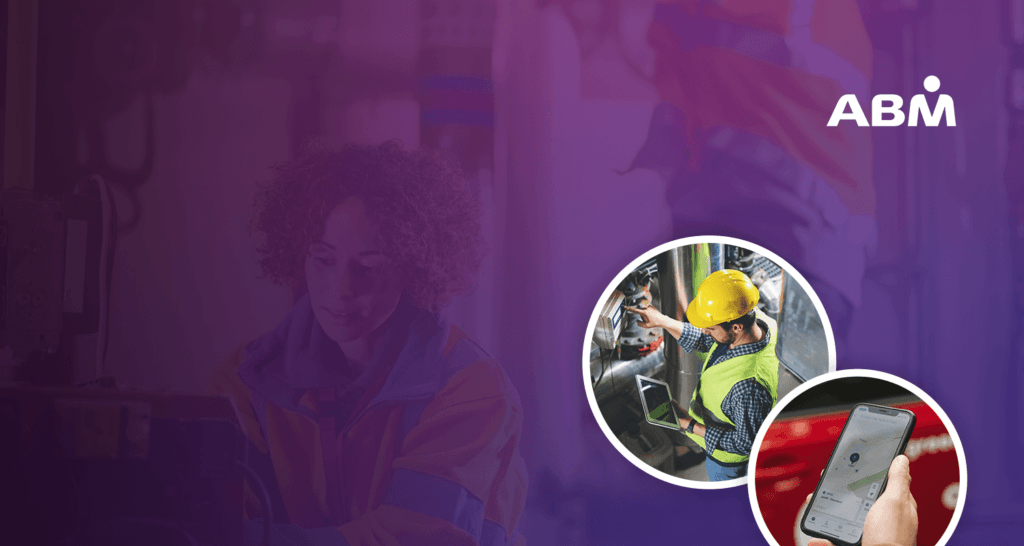Field Service Shift Planning
Field service shift planning is the delicate art standing at the centre of modern operational success. Gone are the days when a simple, static schedule sufficed. Now, with the fluctuating demands of modern industries and the increasing emphasis on employee welfare, getting this balance right is crucial.
Whether you’re managing a vast utility network or a busy healthcare facility, an efficient shift plan is about more than meeting operational demands. It’s about fostering a culture of employee well-being. After all, a harmonised workforce is the backbone of exceptional service delivery.
Modern Field Service Shift Planning
If you’re curious about the growing demand for shift scheduling software, you’re reading the right article. More and more organisations like yours recognise that outdated shift planning methodologies hinder better service.
Take Julie Riley, Head of Older People Services at Bolton at Home. She emphasised to us the significance of transitioning to demand-led shift patterns. “Changing to demand-led shift patterns was a key strategy for restructuring vital services for our vulnerable customers”.
Read the entire case study here: Bolton at Home.
Transforming shift planning not only boosts efficient service delivery but can also greatly uplift employee well-being. This is crucial in today’s competitive job landscape. With the right strategies, it’s less about just filling in the gaps and more about refining the entire field service shift scheduling process.
Creating Balance…
Moving towards demand-led shifts or seasonal shift patterns isn’t merely a trend—it’s driven by tangible benefits. When shift patterns align seamlessly with real-time demand, organisations experience reduced operational complexities and overheads. At the same time, employees find a more predictable and balanced work schedule (Harvard), aligning with best practices for field service shift planning.
The Evolution of Field Service Shift Planning
Field service shift planning has gone through a lot of change in the past ten years, largely thanks to technological advancements. While manual scheduling and shift rostering methods had their time, people increasingly recognise them as archaic. This is especially in complex service environments that require agility and responsiveness.
Enter cloud-based workforce rostering solutions. These digital scheduling tools help organisations like yours efficiently manage the workforce, even with complex shift patterns.
Gone are the days of grappling with cumbersome rosters. Cloud-driven workforce rostering creates schedules and publishes rotas in mere minutes. The result? The right people with the appropriate skills are at the right place at the right time.
Demand-Led Shift Planning
The pivot from manual to tech-driven rostering solutions shows how technology is transforming field service shift planning. With enhanced visibility, granular data management, and even functionalities like self-service for staff, you can transform the entire rostering experience. With real-time data and better decision-making, you have the ideal outcome: shift planning that aligns with real-time demand.
Aligning Resources to Real-Time Demand
Modern shift planning is no longer a static exercise; it’s dynamic and needs to reflect real-world demands. As the service industry landscape rapidly changes, so do its demand patterns. Static and inflexible rostering approaches fall short in such scenarios.
Let’s consider the benefits of effective field service shift management through demand-led rostering:
In summary, integrating real-world demand into shift planning is more than a strategic choice—it’s pivotal for businesses that aim to achieve service excellence. It reiterates the importance of streamlining field service shift scheduling with operational efficiency and positive employee experiences.
Strategies to Design the Ideal Shift Patterns
In the fast-paced world of field service management, designing the perfect shift pattern is a blend of art and science. Shift planning involves a thoughtful combination of data analytics, employee preferences, operational requirements, and future forecasting.
Let’s delve into the methods and strategies vital for scheduling employees:
Remember, while technology and data are instrumental in designing efficient shift patterns, the input and feedback of the employees working those shifts are equally important.
The Human Element – Engaging Employees and Trade Unions
Implementing shift pattern changes in any organisation is not solely about schedules and rosters. The human element, particularly the sentiments of employees and trade unions, is crucial. Here’s how organisations can plan shift schedules to navigate this successfully:
- Open Communication: The key to winning the trust of employees and trade unions is open and transparent communication. Before implementing any changes, clearly explain the reasons, benefits, and potential challenges of the new patterns. Address concerns proactively.
- Include Them in the Process: Employees and trade union representatives should be involved in the shift planning process. Their insights and feedback can be invaluable, ensuring that the patterns are not just efficient but also equitable.
- Highlight the Benefits: Change can be challenging. However, by emphasising the advantages – from better work-life balance to potential increases in efficiency and service quality – you can win over sceptics.
- Training & Support: Introduce training sessions to familiarise staff with new rostering tools and shift patterns. If using technology solutions like Totalmobile, ensure staff are comfortable with its features and functionalities.
- Feedback Loop: After implementing new patterns, maintain a regular feedback mechanism. This will help you understand how the changes impact the ground reality and make necessary adjustments.
Engaging employees and trade unions isn’t a mere formality; it’s essential for any new shift pattern’s smooth adoption and success. By fostering a collaborative environment, organisations like yours can achieve a harmonious balance between service excellence and employee satisfaction.
Check out this article to learn more about the shift planning mistakes harming employee morale and retention.
Addressing Field Service Shift Planning Challenges
Field service shift planning isn’t without its hiccups. From fluctuating service demands and varying employee preferences to legal ramifications, the path is strewn with challenges. Recognising and addressing these is paramount:
Strategies for Effective Shift Management in Large Teams
Managing shifts in larger teams magnifies the complexities. Using real-world examples, like Bolton at Home, can offer insights:
- Clear Communication: As teams grow, ensuring every member is on the same page becomes even more essential. Regular briefings, centralised communication tools, and transparency are crucial.
- Leveraging Technology: When coordinating large teams, relying on manual methods isn’t practical. Modern tools, such as those offered by Totalmobile, can streamline the process, ensuring seamless scheduling and rostering.
- Employee Autonomy: Larger teams often have diverse preferences. Granting employees a degree of autonomy in choosing their shifts within the bounds of operational requirements can boost morale and reduce scheduling conflicts.
Best Practices for Continuous Improvement in Shift Planning
Shift planning isn’t a set-it-and-forget-it process. It demands consistent attention and evolution:
Data Analysis
Periodically reviewing shift data can highlight inefficiencies or areas of improvement. Whether it’s optimising 8-hour or 12-hour shift patterns or tweaking seasonal shift patterns, data is your ally. Check out our complete guide on 8 vs. 12 hour shift patterns.
Regular Health Checks
Like any process, shift planning benefits from regular check-ins. Assess the satisfaction levels of staff, gauge the efficiency of shifts, and make adjustments as needed.
Fostering Continuous Learning
Encourage a culture where feedback is welcomed and acted upon. This not only ensures shifts are optimised but also builds a sense of collaboration and ownership among staff.
Discover More: What are annualised hours?
Training and Alignment in the Ever-Evolving World of Shift Work
In the dynamic realm of field service, nothing remains static. As organisations grow, technologies evolve, and demands fluctuate, one thing becomes crystal clear: the need for continuous training. It’s not just about onboarding; it’s about ongoing alignment.
Think about everything that’s changed in the past four years. Many organisations have shifted from manual, paper-based planning to sophisticated software solutions. This change demands not just a one-time training session but consistent updates to ensure everyone is on the same page.
Continuous training equips your teams to:
- Understand and utilise the full potential of tools at their disposal, be it the latest version of shift planning software or a novel communication channel.
- Adapt to changes in shift patterns, such as the introduction of annualised hours, 8-hour or 12-hour shifts, and seasonal variations. Regular training sessions can demystify these patterns, making transitions smoother.
- Keep pace with industry best practices. As more organisations refine their strategies, sharing these insights can foster a culture of knowledge exchange and improvement.
Aligning your teams through training is about more than just the technical aspects. It’s also about reinforcing the organisational vision and values and ensuring everyone understands the ‘why’ behind changes. Such alignment can significantly enhance the collective commitment to any new system or practice.
Strategies to Design the Ideal Shift Patterns
In the fast-paced world of field service management, designing the perfect shift pattern is a blend of art and science. Shift planning involves a thoughtful combination of data analytics, employee preferences, operational requirements, and future forecasting.
Let’s delve into the methods and strategies vital for scheduling employees:
Remember, while technology and data are instrumental in designing efficient shift patterns, the input and feedback of the employees working those shifts are equally important.
The Future of Field Service Shift Planning
The horizon of field service shift planning holds unprecedented promise. Innovations are not merely enhancements but game-changers that could redefine the whole paradigm.
AI and Predictive Analytics
Artificial Intelligence is no longer the stuff of science fiction. In shift planning, AI can analyse vast amounts of data quickly, identifying patterns humans might miss. Predictive analytics can forecast demand spikes or lulls, allowing for proactive planning. These capabilities mean reduced reaction times and more proactive strategies, ensuring that resources are always where they’re needed most.
Remote Work and Hybrid Models
The recent global events have spotlighted the feasibility and, in many cases, the advantages of remote work. While field services often demand physical presence, some planning, administrative, or supervisory roles might transition to remote or hybrid models. This change brings its own set of challenges and opportunities in shift planning, requiring innovative solutions.
Integration of Advanced Technologies
Imagine smart glasses providing real-time data to field workers or augmented reality tools helping with training. As these technologies become mainstream, they will invariably influence shift patterns and
While these trends are exciting, they also remind us how vital it is to stay in the loop, be adaptable, and always embrace change. Totalmobile, for instance, is at the forefront of embracing and integrating many of these innovations, offering organisations a competitive edge in the evolving landscape.
Discover More: The Future of Shift Work
Conclusion
Shift planning in the field service sector isn’t just about filling slots on a calendar. It’s an intricate dance of matching demand with supply, ensuring employee well-being, and staying nimble in the face of change. As you assess your current strategies, remember the key themes we’ve explored:
- Embrace Technology: The shift from manual methods to digital tools isn’t just about efficiency; it’s about equipping your organisation for the future. Tools that allow for real-time adjustments, like Organise by Totalmobile, can be invaluable in this journey.
- Foster Transparency: Engage employees and, where relevant, trade unions in conversations. Open channels of communication can ease transitions and foster a sense of ownership.
- Continuously Aim for Improvement: The most successful organisations don’t rest on their laurels. Regular assessments, feedback loops, and a commitment to training ensure that you’re always moving forward.
As you embark on this journey, remember that expert guidance can turn great results into outstanding ones. Consider seeking insights from industry leaders. Explore how services from pioneers like Totalmobile can be your compass in the fascinating world of field service shift planning.
















